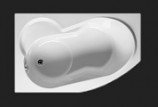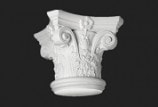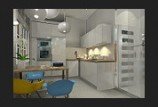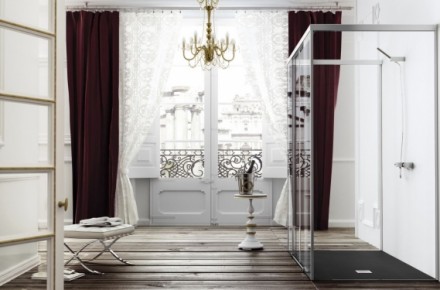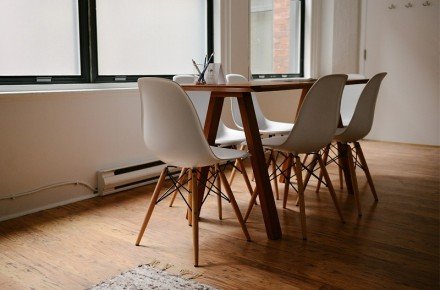Halley is a structural effect, one of those that arise from the use of transparent Lumicca Pearl system paints. Modern, crisp colors give character not only to avant-garde style interiors, but also to fantastically finished restaurants, some parts of the hotel facilities or classic flats. This is one of the most aggressive color effects that can be achieved. By default, it is formed on the subtle structural substrate of Murillo paints, but it is not the only possible solution, although omitting the structural layer is not recommended for various reasons.
Properly applied Halley effect leaves a perfectly smooth, slippery surface which does not attract even small dirt particles. The resulting effect is also resistant to impact and detergents, so it can be used in all places, also as images or fragments of larger compositions. Colored passages of at least three distinct shades are dominant and you can hardly call them neutral. There are cold and warm colors available in the catalog, but the final decision always belongs to the investor who decides what visual effect does he care about.
Application of Halley effect is complicated mainly because of the number of layers that you need to put one over the other. What is important, you must also take care of the appropriate precision, since the result of its absence might be not smooth surface, and so it will lose much of its gloss, which beside the color fairy-like spectacle, the main advantage of this effect.
WHERE TO USE HALLEY EFFECT
- Due to its colorfulness this effect is perfect for decorating children’s rooms. At this point, its considerable durability and resistance to soiling are also important, and these are the features that you will not find in many other color effects.
- Sitting-rooms, which, thanks to this decorative effect become much more visually appealing. Each design is unique as a result – it is physically impossible, even when using the same colors, to create a repetitive pattern, because the color penetration depth is always partially random and it is individuality that is an important feature of the salon or living room. What’s important, Halley effect also looks well as an image, so this form of decoration is entirely possible to use.
- Pillars and decorative items (larger) acquire a completely new look, if finished with the Halley effect. Colorful spirals, lines and color penetrations are always perfectly exposed and visible from each side. The uniqueness of this effect is that applied to architectural decoration elements it looks very differently than “expanded” over a large area.
- Sure, illuminating effect versions are ideal for the decoration of the walls in the hallways or corridors. Additional flashes of light reflected from color finishes give a completely new characters, even to the most ordinary rooms.
- Halley effect works well for finishing bars, clubs or atmospheric restaurants. Its colors are not shoddy, the compositions are thoughtful and you can even call them thematic, and therefore you should not fear that using this effect in the subdued interior will ruin the perception of the flat.
WHY LUMICCA PAINT?
Lumicca paints, which are colored core of Halley effect, have many functional benefits, not only aesthetic. It is them who are largely responsible for the popularity of this line of paints.
- They are resistant to detergent washing, making finish maintenance simple and fast.
- High impact resistance makes Halley effect available for use at critical points, such as for example in the hallways and lobbies.
- Increased flexibility makes forming the effect easier, and after its completion, it is responsible for the increase in resistance to certain external factors.
- Perfectly smooth surface will not attract most of the dirt, so its upkeep requires almost no effort.
HOW TO CREATE THE EFFECT?
The technique of applying primer paint is responsible for creating the structure. It is good to apply it with a brush to create an interesting pattern, which later can be further enriched. Decorative layer is applied with several brushes (one for each color of paint Lumicca) and the finish is done with the rubber wiper shaft, what creates a gradation between colors. Finally, the entire surface is covered with the transparent Lumicca Pearl paint with a suitably selected afterglow effect and it is distributed with the wiper until you get a uniform thin layer across the finish.
[show_gallery images_in_a_row=”4″ galleryid=”356″][/show_gallery]







